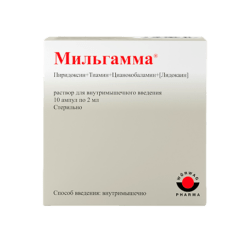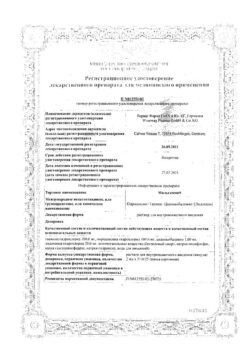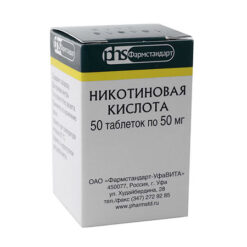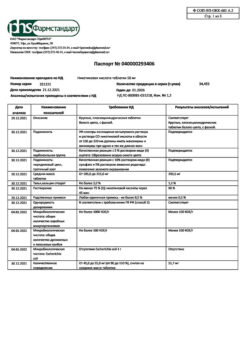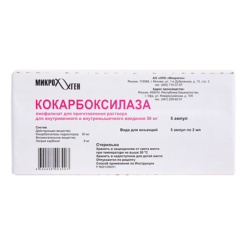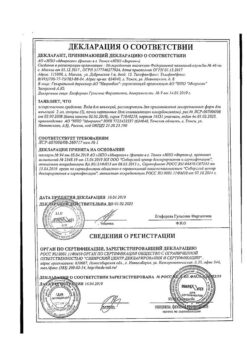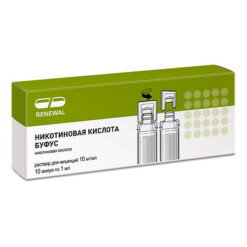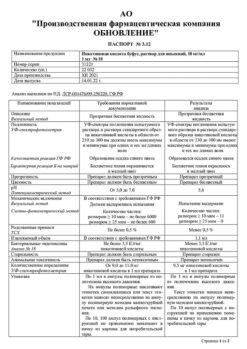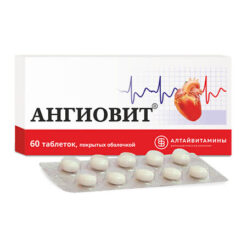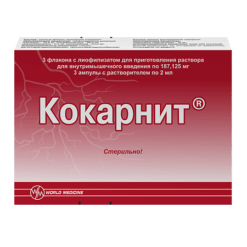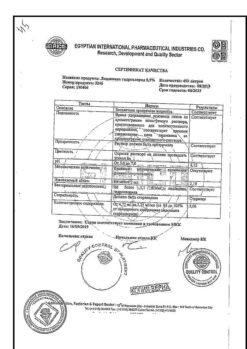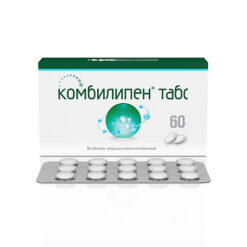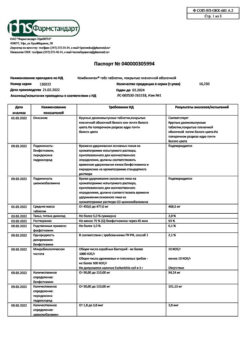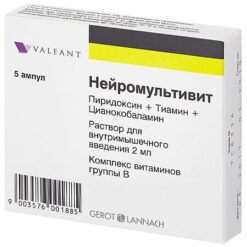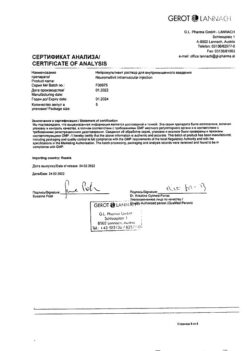No products in the cart.
Compligam B, 2 ml 5 pcs
€10.44 €9.14
Description
Pharmgroup:
B vitamin complex.
Pharmic action:
CompligamB is a combined preparation containing B vitamins and lidocaine.
Neurotropic B vitamins have beneficial effects on inflammatory and degenerative diseases of the nerves and the motor system. They are not used to eliminate deficiency conditions, but in high doses they have analgesic properties, contribute to increased blood flow, normalize the nervous system and the process of hematopoiesis (vitamin B12).
Thiamine (B1) plays a key role in the processes of carbohydrate metabolism, which are critical in the metabolic processes of nervous tissue, as well as the Krebs cycle with subsequent participation in the synthesis of TPP (thiamine pyrophosphate) and ATP (adenosine triphosphate).
Pyridoxine (B6) is involved in the metabolism of proteins and partially in the metabolism of carbohydrates and fats.
The physiological function of both vitamins (B1, B6) is to potentiate each other’s action, manifesting as a positive effect on the nervous, neuromuscular and cardiovascular systems.
The cyanocobalamin (B12) is involved in the synthesis of myelin sheath, stimulates hematopoiesis, reduces pain associated with lesions of the peripheral nervous system, stimulates nucleic metabolism through the activation of folic acid.
Lidocaine is a local anesthetic that causes all types of local anesthetic.
Pharmacokinetics:
After intramuscular administration of CompligamB, thiamine is rapidly absorbed from the injection site and enters the blood (484 ng/mL after 15 min on the first day of administration of a 50 mg dose) and is unevenly distributed in the body with its content in leukocytes 15%, erythrocytes 75% and plasma 10%. Due to the lack of significant reserves of the vitamin in the body it must be supplied daily.
Thiamine penetrates the blood-brain and placental barriers and is found in the mother’s milk. Thiamine is excreted in the urine in the alpha phase after 0.15 hours, in the beta phase – after 1 hour and in the terminal phase – within 2 days. The main metabolites are thiamine carboxylic acid, pyramine and some unknown metabolites. Of all vitamins, thiamine is retained in the body in the smallest amounts. The adult body contains about 30 mg of thiamine in the form of: 80% as thiamine pyrophosphate, 10% thiamine triphosphate and the remainder as thiamine monophosphate.
After intramuscular injection, pyridoxine is quickly absorbed into the bloodstream and distributed in the body, acting as a coenzyme after phosphorylation of the CH2ON group in the 5th position. About 80% of the vitamin is bound to plasma proteins.
Pyridoxine is distributed throughout the body, passes through the placenta and is found in breast milk.
Deposited in the liver and oxidized to 4-pyridoxic acid, which is excreted in the urine, maximum 2-5 hours after absorption. The human body contains 40-150 mg of vitamin B6 and its daily elimination rate is about 1.7 to 3.6 mg with a replenishment rate of 2.2 to 2.4%.
Form of release
Form of release
Compligam B ampoules.
Additional information
| Shelf life | 2 years |
|---|---|
| Conditions of storage | In a light-protected place, at 2-8 °C |
| Manufacturer | PharmFirm Sotex, Russia |
| Medication form | solution |
| Brand | PharmFirm Sotex |
Related products
Buy Compligam B, 2 ml 5 pcs with delivery to USA, UK, Europe and over 120 other countries.


